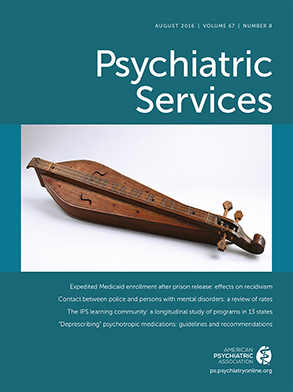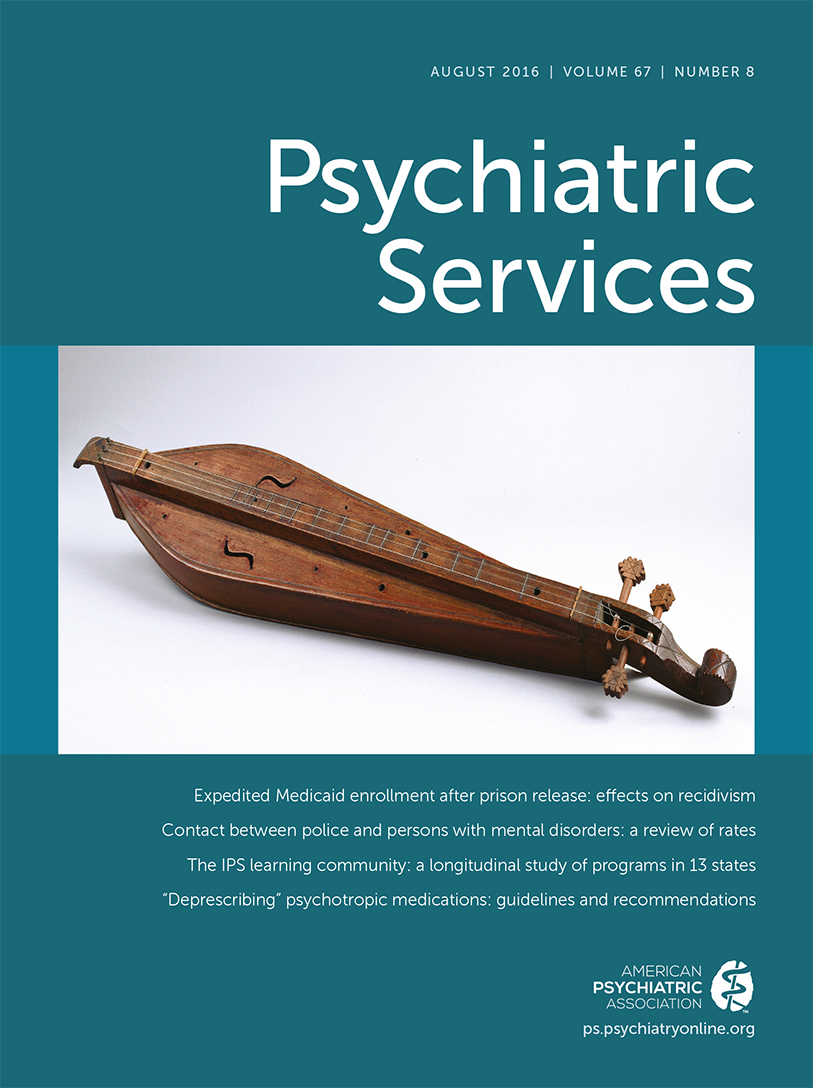SAMHSA releases new quality measurement tools: Improving the quality of care is a primary goal of health care reform, and progress toward value-based reimbursement depends on the development of reliable quality measures. The Substance Abuse and Mental Health Services Administration (SAMHSA) has issued a set of quality measures, including a resource manual, two volumes of technical specifications, and data reporting templates in the form of Excel worksheets. The measures are designed to help states and behavioral health clinics better assess and document their performance and effectiveness in providing treatment to people with mental or substance use disorders or both. The manual,
Metrics and Quality Measures for Behavioral Health Clinics: Technical Specifications and Resource Manual, provides detailed guidance on 32 measures that cover staffing, availability of services, care coordination, scope of services, reporting, and organizational authority and accreditation. For example, some measures address how well a clinic provides access to care, such as by opening for weekend and evening hours and using a sliding fee scale. Other measures focus on the number of suicides that may have been prevented by certain services or the housing status of clients served. The materials were developed in partnership with the Centers for Medicare and Medicaid Services and the Office of the Assistant Secretary for Planning and Evaluation at the Department of Health and Human Services. The materials are available on the SAMHSA Web site at
http://www.samhsa.gov/section-223/quality-measures.
APA’s new telepsychiatry toolkit: Telemedicine is beginning to live up to its potential, as new technologies provide inexpensive ways to connect with patients in remote areas and extend the reach of the health care workforce. A robust evidence base shows that telepsychiatry can lead to improved outcomes and higher patient satisfaction. Policy makers, payers, and providers are increasingly considering ways to implement telepsychiatry. The American Psychiatric Association’s (APA’s) current policy on telepsychiatry states that “Telemedicine in psychiatry, using video conferencing, is a validated and effective practice of medicine that increases access to care. The APA supports the use of telemedicine as a legitimate component of a mental health delivery system to the extent that its use is in the best interest of the patient and is in compliance with the APA policies on medical ethics and confidentiality.” The APA is helping psychiatrists learn about and adopt telepsychiatry through its Committee on Telepsychiatry and its newly released telepsychiatry toolkit. The toolkit includes dozens of videos—none longer than four minutes—that cover the history of telepsychiatry, including evidence of effectiveness and feasibility; training, including training of residents and tips on adapting one’s clinical style to the virtual shared space; clinical issues, such as state regulations, clinical documentation, and inpatient telepsychiatry; and legal and reimbursement issues. As new topics emerge, more resources and information will be added. The toolkit can be accessed on the APA Web site at
http://psychiatry.org/psychiatrists/practice/telepsychiatry/telepsychiatry-toolkit-home.
Kaiser Foundation review of research on ACA Medicaid expansion: Many studies have found that Medicaid expansion under the Affordable Care Act (ACA) has led to increased health care coverage for Americans, budget savings for states, and reductions in uncompensated care costs for hospitals, according to a Kaiser Family Foundation review of 61 studies and policy reports. The review documents the effects of the ACA Medicaid expansion at a time when the future of the expansion—and the ACA more broadly—is being debated in the presidential election and in Congress and as some nonexpansion states consider whether to expand their Medicaid program. The 24-page document,
The Effects of Medicaid Expansion Under the ACA: Findings From a Literature Review, presents the findings of peer-reviewed studies, government reports, and white papers published by research and policy organizations between January 2014 and May 2016, using data from 2014 or later. The review excluded studies on impacts of ACA not specific to Medicaid expansion and studies investigating potential effects of expansion in nonexpansion states. Although most studies found that Medicaid expansion has improved access to care and use of services, studies of changes in health status have mixed results. Some results also highlighted challenges after expansion, including provider shortages. The authors call for additional research to assess the economic effects of state Medicaid expansions as states begin paying a small share of expansion costs and as cuts in federal payments for uncompensated care costs go into effect. The review, along with a separate 23-page appendix of findings from national and state-level studies, is available on the Kaiser Foundation Web site at
http://kff.org/medicaid/issue-brief/the-effects-of-medicaid-expansion-under-the-aca-findings-from-a-literature-review.
Gallup poll finds record number of Americans can afford health care: Of Americans polled in the Gallup-Healthways Well-Being Index in the first quarter of 2016, 15.5% said that they could not afford needed health care or medications in the past year (“health care insecurity”). That is the lowest percentage since Gallup began tracking these data in 2008. From 2008 through 2013, the percentage of Americans who reported health care insecurity was fairly steady, hovering near the average of 18.7%. Since then, the average has been 16.4%, including the new quarterly low of 15.5% in the first quarter of 2016. The ACA is the reason for the change, according to the polling organization. Overall, the percentage of U.S. adults with health care insecurity has dropped 3.5 percentage points since the fourth quarter of 2013. This drop coincides with a decline in the percentage of uninsured Americans, which has fallen from 17.1% in the fourth quarter of 2013—just before the ACA’s requirement that Americans have health insurance went into effect—to 11.0% in the first quarter of this year. Gallup researchers wrote, “The expansion of health insurance coverage to millions more Americans under the Affordable Care Act is likely a major factor in the decline of health care insecurity, demonstrating a concrete benefit of the law,” and they warned that repealing the ACA could reverse the gains. More information on the latest poll is available on the index’s Web site at
http://www.well-beingindex.com.
U.S on track to spend $2.6 trillion less on health care than predicted: An updated analysis by the Urban Institute indicates that the United States continues to spend much less on health care than had been projected. Six years ago, in 2010, the federal Centers for Medicare and Medicaid Services projected that health care spending between 2014 and 2019 would be $23.7 trillion. The current projection for the same time period is $21.1 trillion, or $2.6 trillion less. The lowered projection reflects large declines in Medicare, Medicaid, private insurance, and other health spending projections. One reason for the lower-than-expected growth in health spending is the slow recovery from the recession, according to the report. Reforms in how Medicare pays for health care, which were set in motion by the ACA, could also be playing a role, the report notes, although the ACA’s role in the slowdown remains unclear. If the ACA is responsible, the study’s authors predict, then spending could fall by an even greater amount; however, if the slowdown in health care spending is due to the economy, then spending will return to normal levels as the economy recovers. The 13-page report,
The Widespread Slowdown in Health Spending Growth: Implications for Future Spending Projections and the Cost of the Affordable Care Act, is available on the Urban Institute Web site at
http://www.urban.org/research/publication/widespread-slowdown-health-spending-growth-implications-future-spending-projections-and-cost-affordable-care-act-update.
NASHP report describes strategies to advance health equity: States are transforming their health care delivery systems to improve the health of populations. From a population health perspective, reducing disparities—and the social and economic factors that drive them—is a key goal. Some states are creating multidisciplinary, cross-sector partnerships in which state and local government agencies, health systems, community organizations, schools, and local businesses work together to improve the health of people living in underserved communities. These efforts focus on promoting healthy lifestyles, preventing and treating chronic conditions, and strengthening links between clinical care and community resources. A new publication from the National Academy for State Health Policy (NASHP) examines models in four states—Connecticut, Delaware, Maryland, and Rhode Island—describing their goals, methods, funding sources, and governance structures and how they are aligned with other state reforms. Maryland has established five Health Enterprise Zones in areas with “documented economic disadvantage and poor health outcomes” to improve access, reduce costs, and provide financial incentives, such as hiring tax credits and loan assistance to providers who practice in underserved areas. Rhode Island has 11 Health Equity Zones, which engage local education and housing agencies, city halls, federally qualified health centers, and residents. Coordinating organizations in each zone receive funding on behalf of the collaboratives and disburse it to key community partners to support activities such as community gardens. The seven-page report,
In the Zone: State Strategies to Advance Health Equity by Investing in Community Health, is available on the NASHP Web site at
http://nashp.org/in-the-zone-state-strategies-to-advance-health-equity-by-investing-in-community-health.
AAP recommends routine suicide screening of adolescents: Suicide is now the second-leading cause of death among American teenagers, second only to unintentional injury. The American Academy of Pediatrics (AAP) has updated its guidelines and urges pediatricians to screen all adolescent patients for suicidal thoughts. In its updated clinical report, published in the July issue of
Pediatrics (
http://pediatrics.aappublications.org/content/138/1/e20161420)
, AAP highlights the role of bullying and cyberbullying in teen suicide attempts, as well as pathological Internet use, which is linked to higher levels of depression. Other risk factors discussed include a family history of suicide, a history of physical or sexual abuse, mood disorders, drug and alcohol use, LGB sexual orientation or transgender identification, and the presence of firearms in the home. The AAP recommends that parents of at-risk adolescents remove guns and ammunition from the home. Depression screening instruments shown to be valid for adolescents include the nine- and two-item Patient Health Questionnaire. The adolescent should be interviewed separately from the parent, and pediatricians can initiate a confidential inquiry by asking a general question: “Have you ever thought about killing yourself or wished you were dead?” The question is best placed in the middle or toward the end of a list of questions about depressive symptoms. Regardless of the answer, the next question should be, “Have you ever done anything on purpose to hurt or kill yourself?” Pediatricians should refer patients for appropriate mental health evaluation and treatment when needed. Where such resources are lacking, pediatricians are encouraged to obtain training to become competent at conducting a more in-depth assessment.

